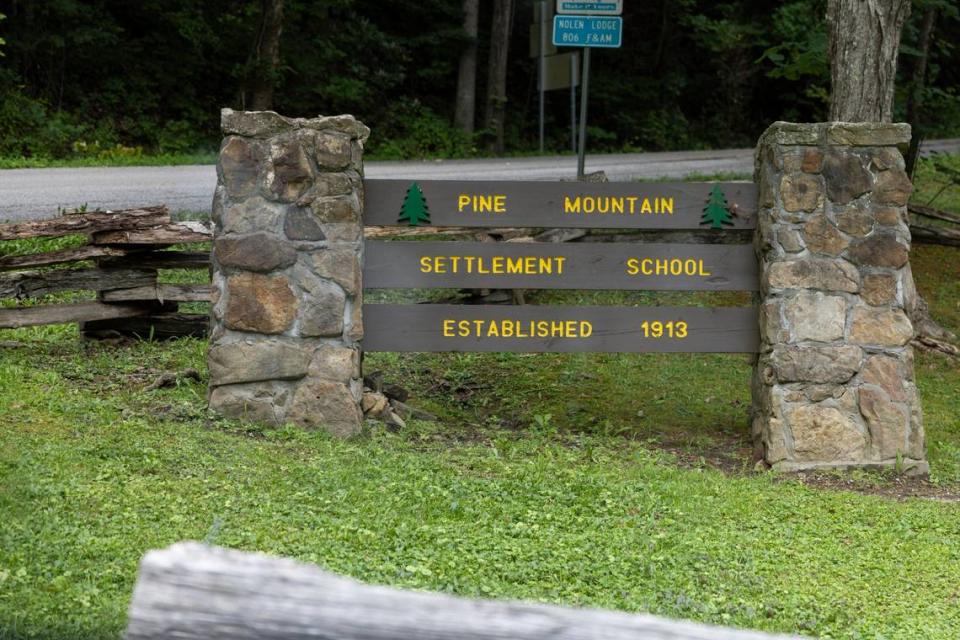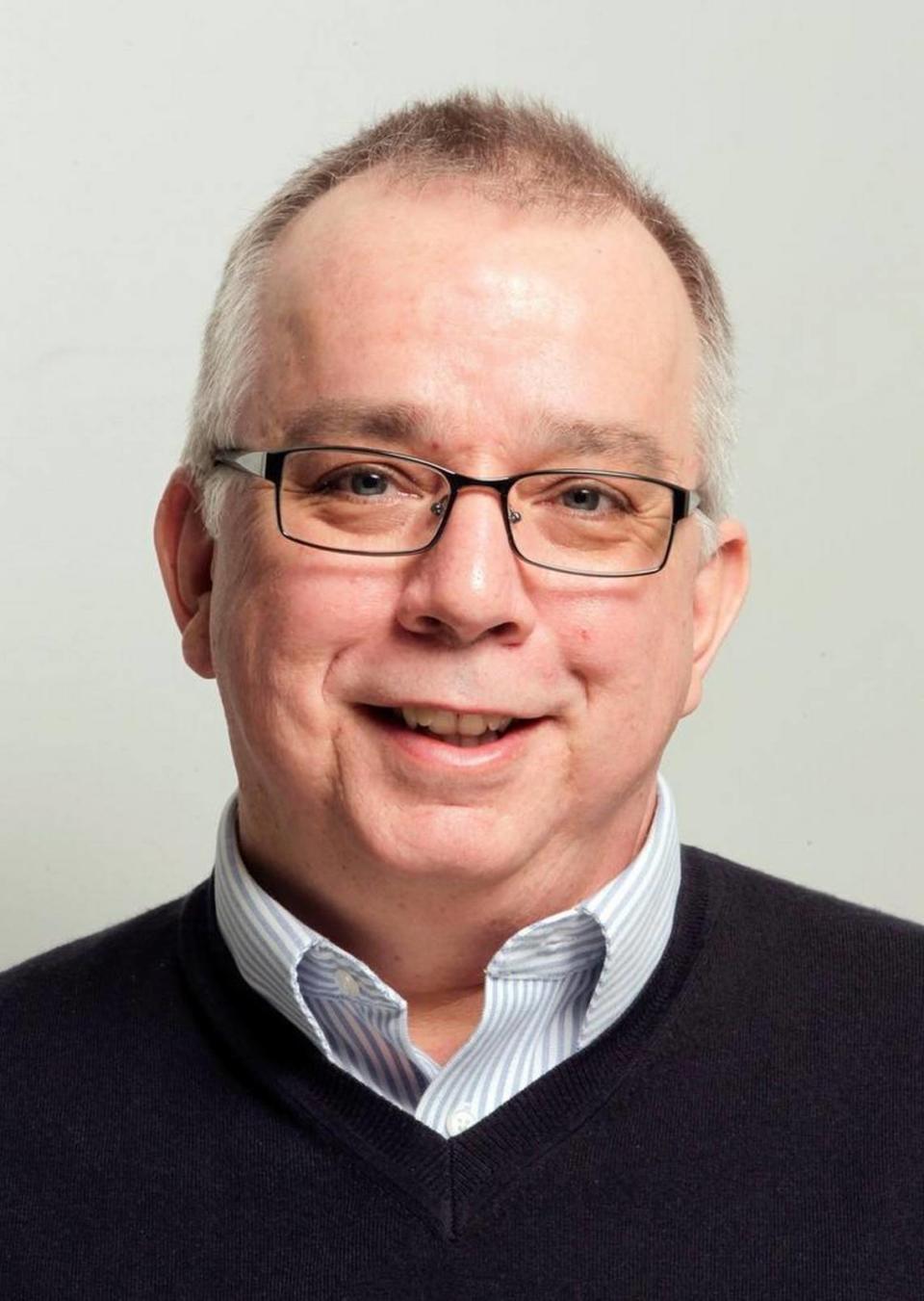Perhaps there weren’t any villains in the Pine Mountain incident | Opinion
A friend asked what I thought about the recent “dust up,” as she called it, at Pine Mountain Settlement School.
I replied that I was so unsure that I’d probably end up having to write a column about it just to figure out my own mind. Thus, this column.
An organization of Appalachian artists called The Waymakers Collective held its annual meeting at Pine Mountain Settlement School in Harlan County.
According to the Herald-Leader’s Linda Blackford, the Waymakers “are dedicated to the art of the marginalized, including indigenous people, people of color and LGBTQ folks.” They stayed on the settlement school’s campus and held a variety of artistic activities.
With the school’s permission, they also turned a chapel into a “healing space,” decorating it “with pillows, mats, a table of aromatic oils and an ‘om’ symbol, which symbolizes the universe in the Hindu religion,” Blackford wrote.
Somebody posted a picture of that decor on social media. People from the community called settlement school officials to complain about the way the chapel was being used.
Pine Mountain officials asked the Waymakers to move the healing space elsewhere. The Waymakers agreed.
But before they could act, several men and women, driving trucks and ATVs, entered the campus and went to the chapel.
They announced that the chapel was a Christian site and the arts group needed to remove non-Christian paraphernalia. This scared the Waymakers, who decided to vacate not just the chapel but the county. They departed in a convoy for safety.
A leader of the protesters was Tate Napier, a descendant of William Creech, who more than 100 years ago donated the land for Pine Mountain Settlement School.
Napier posted later on Facebook that the local group consisted of nine people – “4 being preachers, and 4 being women” – compared with around 70 Waymakers.
The Waymakers, he said, “had no reason to be in fear. We told them from the beginning that we did not hate them and just wanted them out of the chapel if they were going to do the things that they were doing, and I helped them carry that stuff out to their cars.”
In another post, he insisted that “nobody was mean, no fights broke out.”
After the conflict reached this newspaper, I had two conversations about it with friends: one the woman I already mentioned, the other a man.
Both were born and raised Appalachians. Both are thoughtful, well-educated and widely traveled. The woman’s a churchgoer. The man isn’t religious and I think is an agnostic; he’s also an artist. Politically, I’d say they’re both left-of-center.
Interestingly, neither viewed the local residents who drove to the settlement school as villains.
Indeed, my male friend said flatly his sympathies lay with them. What if the chapel had been a Buddhist or Hindu holy place? he said. What if Christians had come rolling up into it and started putting up crosses and holding prayer meetings? Can you imagine the howls?
“You don’t mess with people’s sacred spaces,” he said.
My other friend mainly had questions.
“I doubt the folks taking naps or using essential oils in that chapel meant disrespect, seeing that it was just a quiet space that was set aside for reflection,” she wrote in our lengthy text-message exchange.
Then she added: “But then as I type that, I realize that has some layers to it, because they DID recognize it as a space for reflection, set apart from other spaces.”
She raised the same issue as my first friend. Are Christians treated differently from those of other faiths in controversies such as this? What if the chapel had been a Hindu or Muslim space?
“Do some non-Christians afford a level of respect to other religions and practices that is not given to Christianity because of how they see it in the world?” she asked. If the roles were reversed, “I have to believe that many of those gathered in that chapel space would see that as disrespectful.”
She wasn’t comfortable with the way the Pine Mountain story was likely to be perceived by the media or the outside world:
“This story is going to become yet another simplistic artifact in the ‘Kentuckians (and/or Christians) are close-minded’ narrative, when I think the truth or message of this interaction is much more complex and challenging.”
After going back and forth in my own head, here’s what I think that I think:
▪ The Waymakers had every right to hold their meeting at Pine Mountain – but nobody’s disputing that. The rub was the use of the chapel. I, too, doubt the Waymakers meant any offense.
▪ From a practical standpoint, Pine Mountain’s officials shouldn’t have let the Waymakers set up their healing space in the chapel. Whatever the legalities, it appears the chapel has long been regarded by area residents as a specifically Christian site. As my buddy said, you don’t mess with people’s sacred spaces.
▪ The local group erred by barging onto school grounds. They should have voiced their concerns to Pine Mountain’s officials and left the matter there. I suspect the local faction stereotyped the Waymakers as pagans and atheists out to insult Christians by erecting some New Age shrine.
▪ The Waymakers erred by stereotyping the locals. I haven’t seen any suggestion the locals brandished weapons or threatened violence. Yet the Waymakers described said they were traumatized and fled in a protective caravan. Did they think everyone who drives an ATV or goes to church is a sociopath from “Deliverance”?
▪ If my assumptions above are right, this situation shows yet again the extent to which opposing factions now demonize each other. We talk past each other, assume the worst and act out of all proportion to what’s actually happening. That’s sad.
Paul Prather is pastor of Bethesda Church near Mount Sterling. You can email him at pratpd@yahoo.com.



